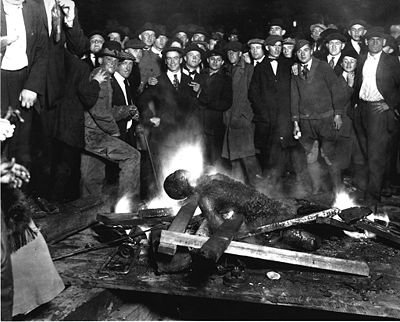
Human Sacrifice
***
When it comes to the death penalty, the only thing the United States can do is plead the insanity defense. The rest of the advanced world has moved on, but America resolutely remains among the top five executioners — behind China, Iran and Iraq, and just ahead of Pakistan. In Colorado, prosecutors are seeking the death of James Holmes, the clearly insane young man who dyed his hair a vivid orange, allegedly killed 12 people at a midnight showing of “The Dark Knight Rises” and made no effort to escape. “Justice is death,” declared the prosecutor. The Taliban, I tell you, are among us.
That utterance came from the Arapahoe County district attorney, George Brauchler, who said he decided to go for the max after talking to 60 family members of those murdered. Presumably and understandably, they all favored the death penalty — and I might, too, if someone I loved was murdered. But this is the crime, as heinous as it might be, of a crazy person. Holmes’s execution will not deter anyone else — although sensible gun control might — and so his death, if and when it comes, will amount to vengeance. That’s understandable, but it is not justice.
Colorado has a long way to go before it can execute Holmes. The barriers to execution are always high, and in this case they might be insurmountable. Holmes would be in considerably more jeopardy if he were in Virginia. The commonwealth, sir, is No. 1 in the country in the ghastly statistical category of executions per sentencing. From 1977 through 2010, according to the Death Penalty Information Center, Virginia condemned 149 people but executed only 108 of them. This gives the state an execution per sentencing ratio of 0.725. (Texas is second — 932 death sentences and 464 executions for a ratio of 0.498.) Colorado handed down only 15 death sentences in that period and executed only one person. The state’s ratio is a paltry 0.067.
These numbers provide some insight into how randomly and capriciously the death penalty is applied. In that regard, the Death Penalty Information Center has an interesting list. It’s titled “Those Executed Who Did Not Directly Kill The Victim.” It contains 20 names, and while these executions might not bother you — after all, a murder did occur — some of the people were executed while the person who did the actual killing was not. In Arizona, the New York Times reported last week, a 36-year-old man awaits execution for a murder in which the trigger man can look forward to eventual release. Three of the four people convicted of the crime got deals for their cooperation. Okay, maybe they earned some consideration, but the fourth man, the usual nitwit tough guy, did not by himself earn the death penalty. The others knew how to game the system.
Sometimes after a mass shooting or some hideous home invasion such as the 2007 one in Cheshire, Conn., in which a woman and one of her two daughters were raped and all of them murdered and set on fire, my opposition to the death penalty is consumed in a furious desire for vengeance. I will not miss Steven J. Hayes and Joshua A. Komisarjevsky, the two Cheshire killers, if and when they go. But I recognize, too, that their deaths will deter no one else and that, in other cases, the application of the death penalty might mean that the less guilty or the outright innocent will die. Mistakes will be made.
In Colorado, all systems failed the victims of the Aurora movie theater shooting. James Holmes had signaled his intent. He related homicidal fantasies to a University of Colorado school psychiatrist. He then sent her threatening text messages. He assembled an arsenal of weapons and ammunition — and no one noticed. He booby-trapped his apartment but told the police about it when he was captured. Holmes was in the throes of a severe psychological breakdown. In pathetic response, his campus key card was deactivated. In the meantime, he bought more weapons.
We did not know what to do about Holmes before his crime and we don’t know what to do with him now. The orange is gone from his hair and he looks, more or less, normal. But he is a deranged young man; since we never knew how to treat him, we will now try to kill him. This may seem barbaric, but rest assured: “Justice is death,” the D.A. said. In the United States — as well as, say, China — we have an abundance of justice.

No comments:
Post a Comment